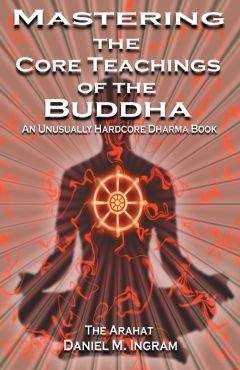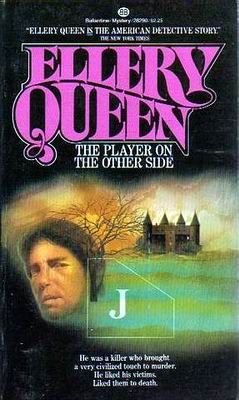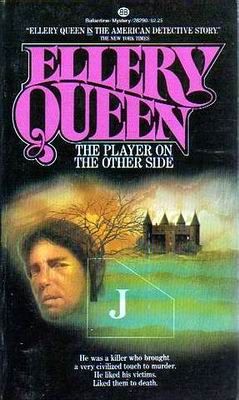Daniel Ingram - Mastering the Core Teachings of Buddha - An Unusually Hardcore Dharma Book
На сайте mybooks.club вы можете бесплатно читать книги онлайн без регистрации, включая Daniel Ingram - Mastering the Core Teachings of Buddha - An Unusually Hardcore Dharma Book. Жанр: Прочее издательство -,. Доступна полная версия книги с кратким содержанием для предварительного ознакомления, аннотацией (предисловием), рецензиями от других читателей и их экспертным мнением.
Кроме того, на сайте mybooks.club вы найдете множество новинок, которые стоит прочитать.

Daniel Ingram - Mastering the Core Teachings of Buddha - An Unusually Hardcore Dharma Book краткое содержание
Mastering the Core Teachings of Buddha - An Unusually Hardcore Dharma Book читать онлайн бесплатно
And yet, their maps of enlightenment still contain a hefty helping of scary market-driven propaganda and so much garbage that is life-denying, dangerously out of touch with what happens, and an
impediment to practice for millions of people. That the enlightened lineage holders of the modern Theravada and their ex-monk Western counterparts don’t have the balls to stand up and say, “We are deeply sorry that for 2,500 years our predecessors perpetuated this craziness to put food in their bowls and fool ignorant peasants so that they might be supported in their other useful work, and we vow to do better!” is a crying shame.
They are chained to the texts, myths and the ancient lies, seemingly doomed to indoctrinate and brainwash generation after generation of monks, practitioners and devoted followers with their delicious poison.
What a freakish paradox that the meditative techniques and
technologies that I consider among the most powerful and direct ever created should come from a tradition whose models of awakening contain some of the worst bullshit of them all. I have sat with numerous arahats who were monks or former monks who just couldn’t seem to 277
Models of the Stages of Enlightenment
overcome their indoctrination and so when giving dharma talks would habitually mix in the crap with the gold when it was obvious they knew better.
I have at times dreamed that all the teachers from all the lineages would get together in secret, come up with a plan to jointly get themselves out of the trap, and in a big formal ceremony present the truth as a new beginning, like a mass intervention, like a family gathering around an alcoholic to try to force them to reform their ways. None of them on their own seem to be fully able to take the heat, as each one that steps out of line in a direct fashion tends to get blasted, though there are exceptions, such as Jack Kornfield’s After the Ecstasy, the Laundry. Thus, I think they should all try to do it together, with Zen Masters, Lamas, Rinpoches, Tulkus, Sayadaws, Achaans, and their Western counterparts all standing side by side saying, “Enough is enough! We are declaring a new era of honest, open, realistic dharma teaching, free from sectarian fighting, free from preposterous models of awakening, and free from denial of humanity!” Enough of my ranting, back to the models…
I have no major beef with their description of stream entry. It does make people realize somewhat that rites and rituals are not the primary reason that they got enlightened, though I know of a number of practitioners that got enlightened with the help of techniques that were very ritualistic and continue to include rituals of various sorts in their practice, and why not. Stream entry does counter in some semi-intellectual way the sense that there is a permanent, separate self, though exactly how they know this is much more vague and mysterious to them than at the higher stages of awakening, though it beats the pants of any understanding of this that is pre-stream entry.
Further, they know that awakening is possible and can be done in this lifetime, assuming they know they are awakened in the first place, which strangely not all enlightened beings do. Those persons that encounter these understanding outside of established traditions may fail to recognize that what they have understood is called awakening and other names. Regardless, stream entry is known as the opening of the Dharma Eye, as contrasted with the Wisdom Eye of arahatship. These 278
Models of the Stages of Enlightenment are simply poetic metaphors for some aspects of clearly perceiving things.
My real problem with the Theravada Four Path Model comes as
soon as it starts talking about second path, i.e. the attenuation of greed and hatred or attraction and aversion, and by the time it promises eliminating these in their ordinary forms as they say occurs in third path, I think that serious critique of their language and dogma is called for.
What they are attempting to say is that the sense of the observer, center point, continuous and separate subject, watcher or however you want to describe the sense that there is some Self at the center of all this stuff that so compelling seems to divided into Self and Other is, in fact, just a bunch of sensations. When these begin to be perceived as they are, the sense of how special the center point is begins to lose its grip on perception, which begins to become wider, more inclusive, and more even in its basic treatment of phenomena. Thus, as there doesn’t seem to be so much of a this side and a that side, attempts to get away from that side when it is bad, get to that side when it is good, or just tune out to the whole thing when it is boring diminish at some basic perceptual level, and so the system functions better as it is better at realistically interpreting the information coming into it.
This is a very tough thing to talk about, and certainly doesn’t sell as well as saying, “Do these things, and you will be free from all negative emotions,” or worse, “We did these things and so are free from all negative emotions, and so you should worship us, give us donations, support our center, buy our books, give over power to us, think of us as very special or amazing, stand in awe of us, sleep with us, allow us to act like raving nutcases, etc.” I think you get the picture. Thus, what happens in reality is that segments of the process of making specific categories and patterns of the causal, sensate field into a separate “self”
is reduced and then stops. However, many of the traditions advertise eliminating negative emotions and the sensations of craving or aversion.
The two couldn’t be more different, and yet they are described as being the same.
A REVISED FOUR PATH MODEL
Here is my revised version of the Four Path Model, and this is the primary model I use when describing awakening, talking about my 279
Models of the Stages of Enlightenment
practice, and helping others practice. I think that using the original terminology and revising its definitions allows a lot of good material in the Pali Canon to be used, thus provides a link to previously done work.
However, I realize that using terminology that already has such deep cultural and dogmatic resonance may be a problem. For those who want something new, I will shortly present a rephrasing of this model that I call the Simple Model.
In the Revised Four Path Model, Stream Enterers have discovered the complete discontinuity that is called Fruition and sometimes called Nirvana or Nibbana (Sanskrit vs. Pali). This is the first of two meanings of Nirvana, with the other being Fourth Path. Stream enterers cycle through the ñanas, know that awakening or some different
understanding from the norm is possible, and yet they do not have all that different an experience of most sensations from those who are not yet stream enterers. They may correctly extrapolate a lot of good dharma insights from momentary experiences, particularly high up in High Equanimity and the three moments before a Fruition, but this is not the same as living there all the time. In fact, most stream enterers have a very hard time describing how things have changed in terms of their daily life except that they cycle and can understand the dharma in ways they never could before.
Those of Second Path have now completed a new insight cycle.
They understand the process by which enlightened beings make further progress and equate progress with further cycles of insight, which is partially true. More model-obsessed or intellectual practitioners at second path may get very into fractal models, consciousness models, enlightenment models, various integrative theories, and that sort of thing at this stage of practice. Psychological issues tend to be a bit more of a big deal during this phase, and psychological development become interesting to them in some way. By this point most people, though certainly not everyone, also have a pretty good understanding of the basics of the samatha jhanas, and these can be very fascinating. What they may be most bothered by is that cycle after cycle of practice, duality remains the predominant experience most of the time.
Those of Third Path have shifted their understanding of what progress is from those of Second Path, and have begun to see that it is 280
Models of the Stages of Enlightenment about perceiving the emptiness, selflessness, impermanence, luminosity etc. of sensations in daily life and begin to see that they have the ability to do this. This can be a long, developmental process from the first time they notice this to it becoming a nearly complete experience. Thus, Third Path tends to be a long path, though it doesn’t have to be.
At the beginning of Third Path, most practitioners think: “I’ll just complete more cycles of insight, like I did before, and this will do the trick.” They don’t tend to understand what it is they have attained all that well yet, nor its deeper implications. By the mature stage of Third Path, which can take months to years to show up, the practitioner is more and more able to see the emptiness, selfless, centerlessness, luminosity, etc. of phenomena in real-time, so much so that it can be very difficult to notice what artificial perceptual dualities remain.
As they cycle, they will enter new territory, possibly causing some uncertainty or instability, and with each Review phase they tend to really feel that they have done it until they begin to notice the limits of their practice. There can be this nagging something in the background that things aren’t done, and yet figuring out exactly what the problem is can be very slippery. It is a bit like being in the stages before stream entry, trying to figure out what exactly needs to be done. They need to notice something that has nothing to do with the cycles, to finally untangle the knot of perception at its core, but doing this can be a real trick. It is a very strange place, as one seems to know the dharma all the way to the end and yet somehow it just isn’t quite enough. In that vein, it is interesting to note that I wrote the vast majority of this book while I was some sort of anagami, and on reflection I got just about everything right.
My emphases are slightly different now, but the basics are all the same.
As things progress, anagamis begin to tire of the cycles to a small or large degree and begin to look to something outside of them or not related to them for the answer to the final question. Finally, the cycles of insight, the states of concentration, the powers, and all the other perks and prerogatives of their stage of awakening or concentration abilities (if they developed them) hold no appeal and only lead to more
unsatisfying cycles.
I completed around 27 full, complete insight cycles with mind-blowing A&P Events, Ass-kicking Dark Nights, Equanimity phases, and 281
Models of the Stages of Enlightenment
what seemed to be brand new, fresh Fruitions and Review phases between third and fourth path. There is nothing special about that number, both because it is just a guess and because of the reasons I stated when describing the phenomena of Twelfth Path. The later cycles got faster and faster, so that by the end it seemed I was whipping one out every few weeks or even every few days, but they still seemed to be leading nowhere.
It was only when I had gotten so sick of the cycles and realized that they were leading nowhere that I was able to see what has nothing to do with the cycles, which also wasn’t anything except a strange untangling of the knot of perception of them. The cycles, for better or worse, have continued just the same. Thus, there is not much point in counting cycles or paths, as they don’t necessarily correlate well with anything past the first two or three, and issues of backsliding can really make things complex, as I explained earlier.
Finishing up my Revised Four Path Model, arahats have finally untangled the knot of perception, dissolved the sense of the center point actually being the center point, no longer fundamentally make a separate Self out of the patterns of sensations that they used to, even though those same patterns of sensations continue. This is a different understanding from those of Third Path in some subtle way, and makes this path about something that is beyond the paths. This is also poetically called the opening of the Wisdom Eye. What is interesting is that I could write about this stage quite well when I was an anagami, but that is a whole different world from knowing it like arahats know it.
The Wisdom Eye may seem to blink initially. It may go through cycles of flashing open just after a Fruition and then slowly fading over a few hours (at least on retreat) as each round of physical sensations, then mental sensations, then complex emotional formations, then lastly fundamental formations such as inquiry itself move through and become integrated into this new, correct and direct perception of reality as it is. Review cycles may occur many times during each flash, but when the eye is open they seem rather irrelevant in comparison to keeping the level of clarity and acceptance high enough to keep the eye open. When the eye fades and the knot of perception seems to retie itself, the familiar insight cycles may seem like pure drudgery, with the focus 282
Models of the Stages of Enlightenment drifting back to getting lost in the cycles and then gradually shifting again to getting clear enough to get the eye to open again. The themes that occupy center stage go through a cycle that is very much like a progress cycle.
Finally, the Wisdom Eye cycles and insight cycles all converge, and the thing stays open from then on, which is to say that at that point it all seems the same whether or not the eye is open, which it actually was.
That being seen, nothing can erode or disturb the centerlessness of perspective. Done is what is to be done, and life goes on. That there are arahats who have opened the Wisdom Eye but had it fade and those who have opened it and had it stay open is rarely mentioned but worth knowing.
For the arahat who has kept the thing open, there is nothing more to be gained on the ultimate front from insight practices, as “done is what is to be done”. That said, insight practices can still be of great benefit to them for a whole host of reasons, there is a ton they can learn just like everyone else about everything else there is to learn. They can grow, develop, change, work and participate in this strange human drama just like everyone else. Practicing being mindful and the rest still helps. They also cycle through the stages of insight, as with everyone above stream entry, so doing insight practices can move those cycles along.
A SIMPLE MODEL
In earlier versions of this work, I had a model called The Heart Sutra Model. The Simple Model is the less mysterious, stripped down version of that earlier model, though in its essence it is the same. While in one sense it is also rephrasing of the Revised Four Path Model, as it has no numbers, and is free of the traditional names, it has some advantages over that terminology.
I present this somewhat novel model here because it focuses on real insight directly and treats any emotional benefits of this as side effects.
Further, there are often too many cycles of insight before arahatship, making the Four Path model troublesome. This phenomena of too many cycles (which I will sometimes call “paths” with a lowercase “p”) between each of the Four Paths gets worse as one works towards final awakening. As Bill Hamilton put it, and I have learned the hard way,
Похожие книги на "Mastering the Core Teachings of Buddha - An Unusually Hardcore Dharma Book", Daniel Ingram
Daniel Ingram читать все книги автора по порядку
Daniel Ingram - все книги автора в одном месте читать по порядку полные версии на сайте онлайн библиотеки mybooks.club.




